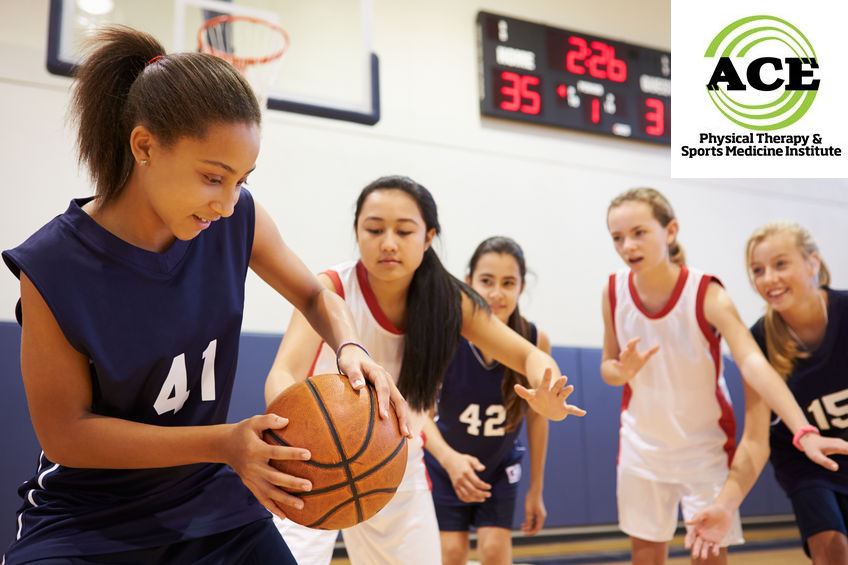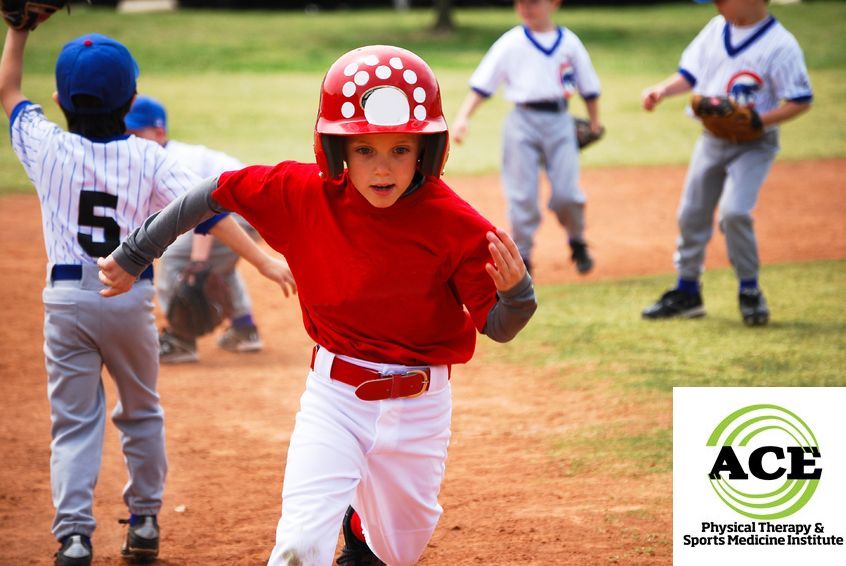STAYING HEALTHY AND PARTICIPATING IN YOUTH SPORTS

Tid Bits of Info
- Many surveys indicate that greater than 50% or all children ages 6-17 participate in at least one team sport.
- Girls usually go through puberty 10-16 years of age and boys start around 11-12 and complete the process around 17- 18.
- Body fat and/or body composition may play a role in regulating the onset of puberty.
- 3 months of “down time” is recommended but does not have to be at the same time.
- If your young athlete gets suffers an injury, seek the advice and treatment of a Physical Therapist.
Over 21 million youth from ages 6 to 18 compete in a team sport. Many children specialize in one sport. While they develop their specialized talents and may become superior in that sport to non-specialists, they also increase the risk of injury. In recent years, many healthcare professionals and sports leaders have begun encouraging youth to become “multi-sport” athletes. This would help reduce the negative effect single sports participation can have on the musculoskeletal system and the injuries that occur resulting from the repetitive nature of the participating in the same event day after day.
When compared to the mature male or female, youth skeletons and muscles are more susceptible to overuse injuries in many ways. Proper training plays a primary role in preventing overuse injuries. Youth athletes are capable of developing strength, but they cannot expect to experience a great deal of muscle hypertrophy (growth) if they have not reached puberty. Because many children participate in only a single sport, they place a tremendous load on the skeleton and soft tissues of their body. Their bodies are not developed well enough to handle the stresses and strains of participating in one sport.
As the skeleton matures and the muscles become strong enough to support it, the risk of overuse injuries for participating in sporting events is reduced. This is probably why a mature person is less susceptible to an overuse injury. The mature person will have skeletal maturity prior to the ages of 14 – 20 in most cases. These individuals will have gone through puberty and are capable of producing enough of the hormone, testosterone, which enables them to develop more strength and muscle mass. This muscle strength is a great “protector” of the joints and bones. They dynamically support them and absorb mechanical stresses and strains that might damage them if they have to act without the support of strong well-developed musculature.

The National Strength and Conditioning Association has put together a list of guidelines that will hopefully help parents and coaches prevent injuries to the youth athletes in their lives. Most of the suggestions/guidelines deal with rest periods and less frequent participation. A brief summary of the guidelines follows:
- Pre-season and in-season conditioning program should focus on the whole body with emphasis on the core musculature. Include flexibility and cardiovascular exercises
- Participation in one sport per season and only with one team
- Rest and down time from sports is a must. A total of 3 months off is a good amount of down time
- Try to rest and take 1 month off between seasons and sports if the athlete is competing in more than one sport
- Try not to specialize in one sport until the athlete goes through puberty or is at least in the later stages of it
- The athlete should combine organized sports with fun activities/sports at the same time. The ratio should be 1:2 when discussing participation time in hours
- A simple way to think about # 6 is to keep the number of hours of participation per week in an organized sport to less than the child’s age
- All activities involved with the organized sport (practice, conditioning, competition) should be less than 16 hours per week
- Have at least 1 day off per week from any kind of activity that is associated with an organized sport
Participating in youth sports often involves the whole family. If a youth is injured, the entire family can be disrupted on multiple levels. From treatment to rehab, the whole family must be involved helping the injured youth recover.
If an injury occurs, families should seek treatment by a Physical Therapist that specializes in orthopaedic/sports injury rehabilitation. These licensed, healthcare professionals are easy to visit and do not require a doctor’s prescription. Your insurance policy might require that you secure a referral for these services from your general practitioner.
Participating in youth sports is a great activity for many children. Unfortunately, the specialization in one sport that is the norm in so many athletes pre-disposes them to injuries. Fortunately, with proper training techniques and enough rest time, most young athletes can participate injury free.
























